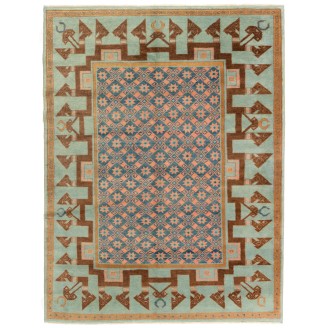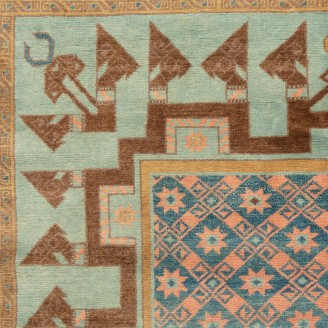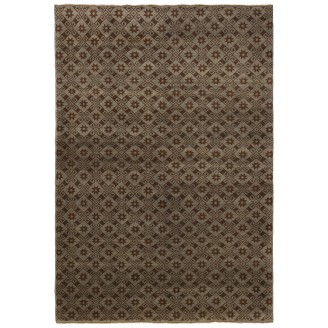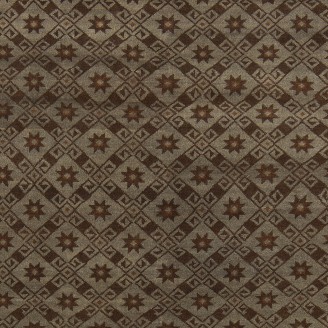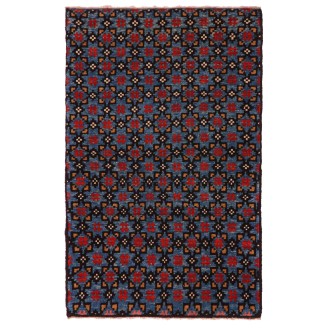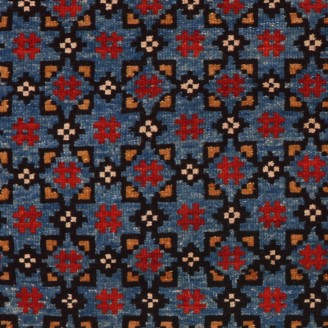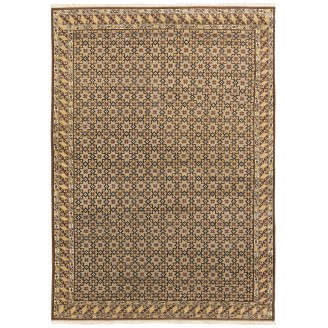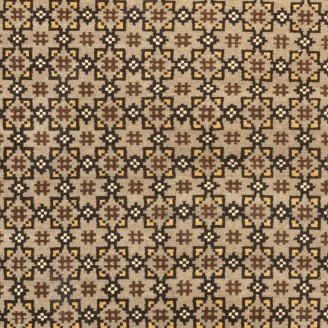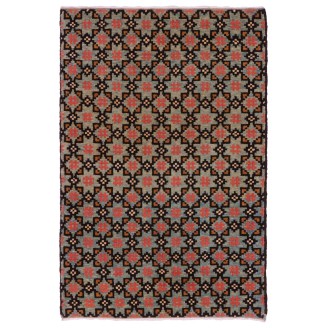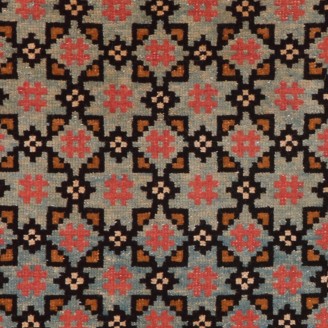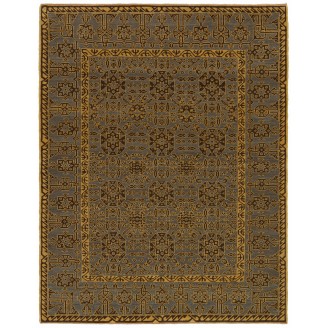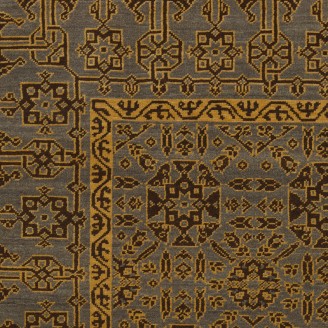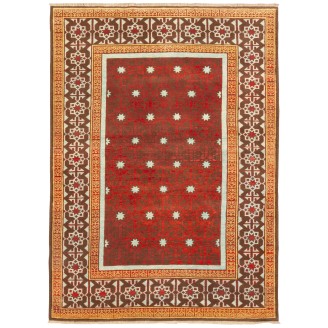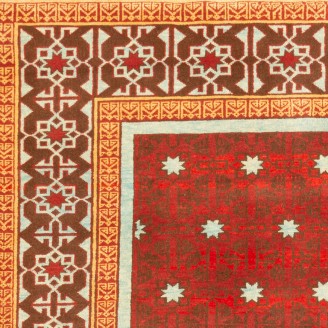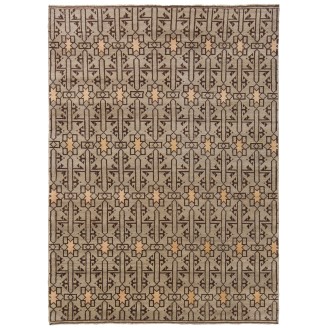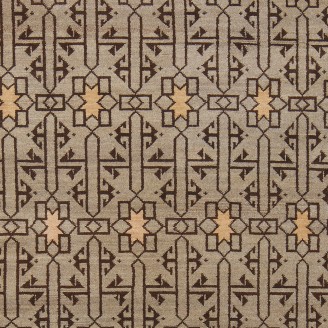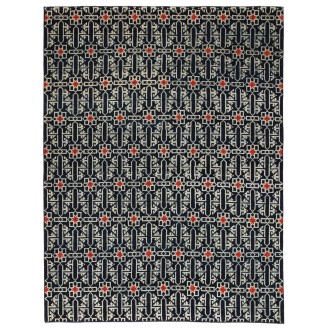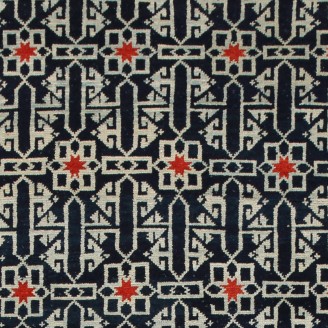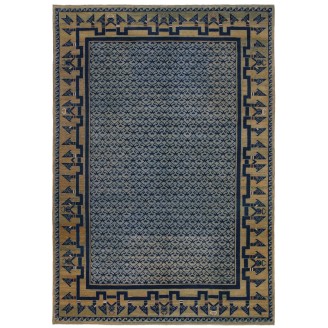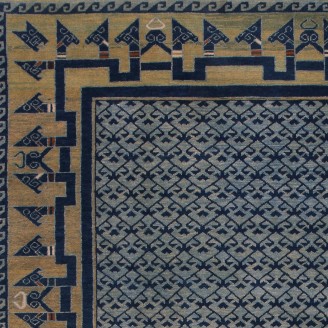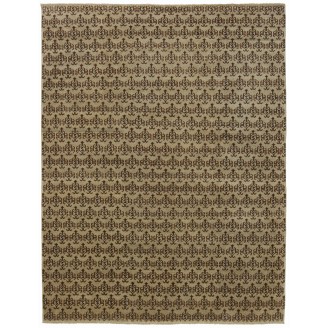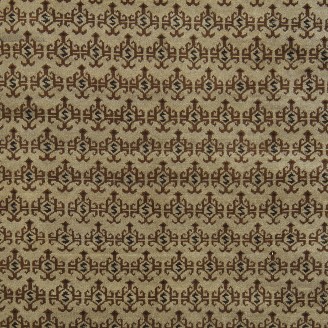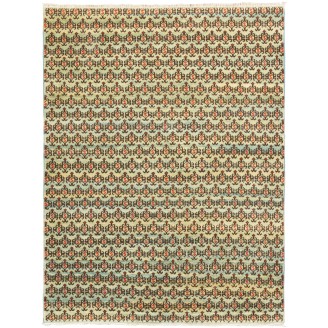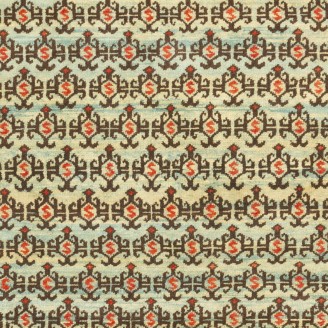The Seljuk period marks one of the highest points in art and architecture in Anatolia. Therefore, it is not surprising that tremendous excitement was caused by the discovery of two Turkish knotted-pile carpets from this era. In 1905, seven examples were found by Fredrik Robert Martin (1868-1933) in the Ala'eddin Mosque in Konya, the foremost mosque at the heart of the Sultanate, which was constructed in stages between the mid-12th and mid-13th centuries. Generally referred to as the 'Seljuk' or 'Early Konya' carpets (although they do not relate to any later carpets attributed to Konya), these soon came to be considered the most important group of early Anatolian carpets. Their patterns are not reflected in the architecture and do not represent the art of the Seljuk court; they are more likely the work of one of the nomadic or semi-nomadic Turkmen tribes that inhabited central Anatolia at this time. Labeling them 'Seljuk-period' would therefore be more accurate.
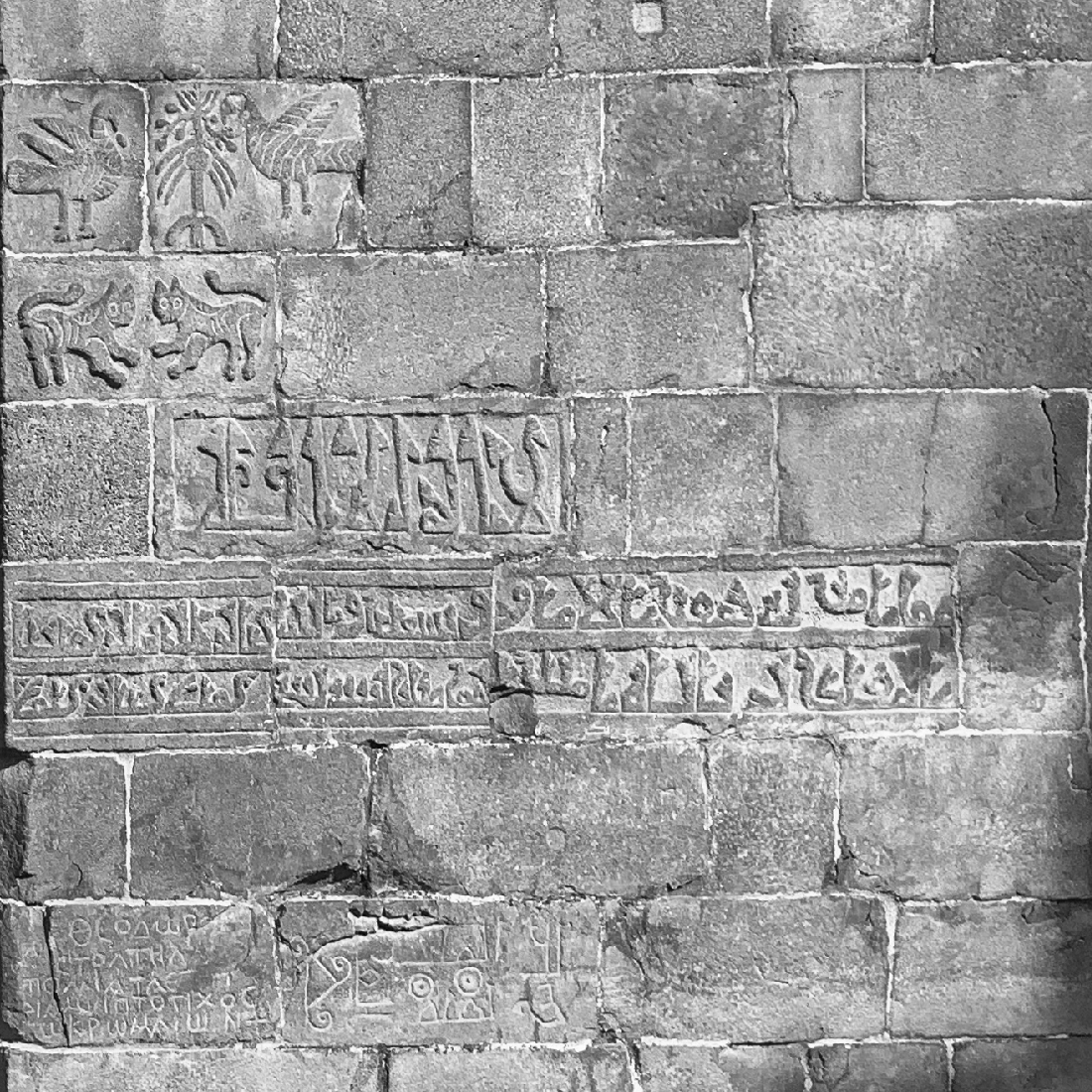 Diyarbakir Wall
Diyarbakir WallThe conquest of major parts of the Eastern Roman Empire by the Seljuk Turks following the Battle of Manzikert ( Malazgirt ) in 1071 and the collapse of Byzantine control over much of central and eastern Anatolia gave rise to the Sultanate of Rum and the introduction of the Sunni Muslim religion to many major cities. It also marked the migration of thousands of Turkmen tribes from the Central Asian steppes, the Caucasus, and Iran into the area. Many settled in the cities of Anatolia, in particular Konya, which was to become the capital of the Sultanate, but others continued their nomadic tribal life. From 1071-1277, Anatolia was divided into eleven beyliks, small principalities that swore allegiance to the Sultan in Konya. Seljuk's power diminished after their defeat by the Mongols at the Battle of Kose Dag in 1243. The Mongols ruled large areas of central and eastern Anatolia until 1355, but the Seljuk sultans rebelled many times. Much of Anatolia, particularly the West, was ruled by the Turkish population, and from 1283, it was divided into twenty-three beyliks. From 1299, the Osmani beylik ( later Ottoman Empire ) started to develop as the most powerful clan, eventually dominating the whole of Anatolia and forming the Turkish state.
The designs of the Seljuk-period carpets and their relatively coarse weaves have very little to do with the refined court art of the Seljuks. The only association they have with the Seljuks is that they are contemporaneous. The carpets have design affinities with Mongol art, which would place them after 1255. Their patterns of them are very similar to Turkmen carpets from Turkmenistan, examples of which survive from the 17th century and later. They were likely made for a Turkmen tribal chieftain in rural central or central-eastern Anatolia, used during his lifetime in his yurts, and then possibly after his demise donated to the mosques. Though in many ways differing, they are nevertheless all of the same kind and from the same period, viz. contemporary with the erection of the mosque. Their ground is decorated with a straightforward pattern repeated many times. The border of these carpets, their characteristic feature, consists of Kufic decorative letters, which, by their pompous form and large size, are entirely different from all such letters known on other carpets. They are scions of the magnificent Kufic writing used at the commencement of the Caliphate.
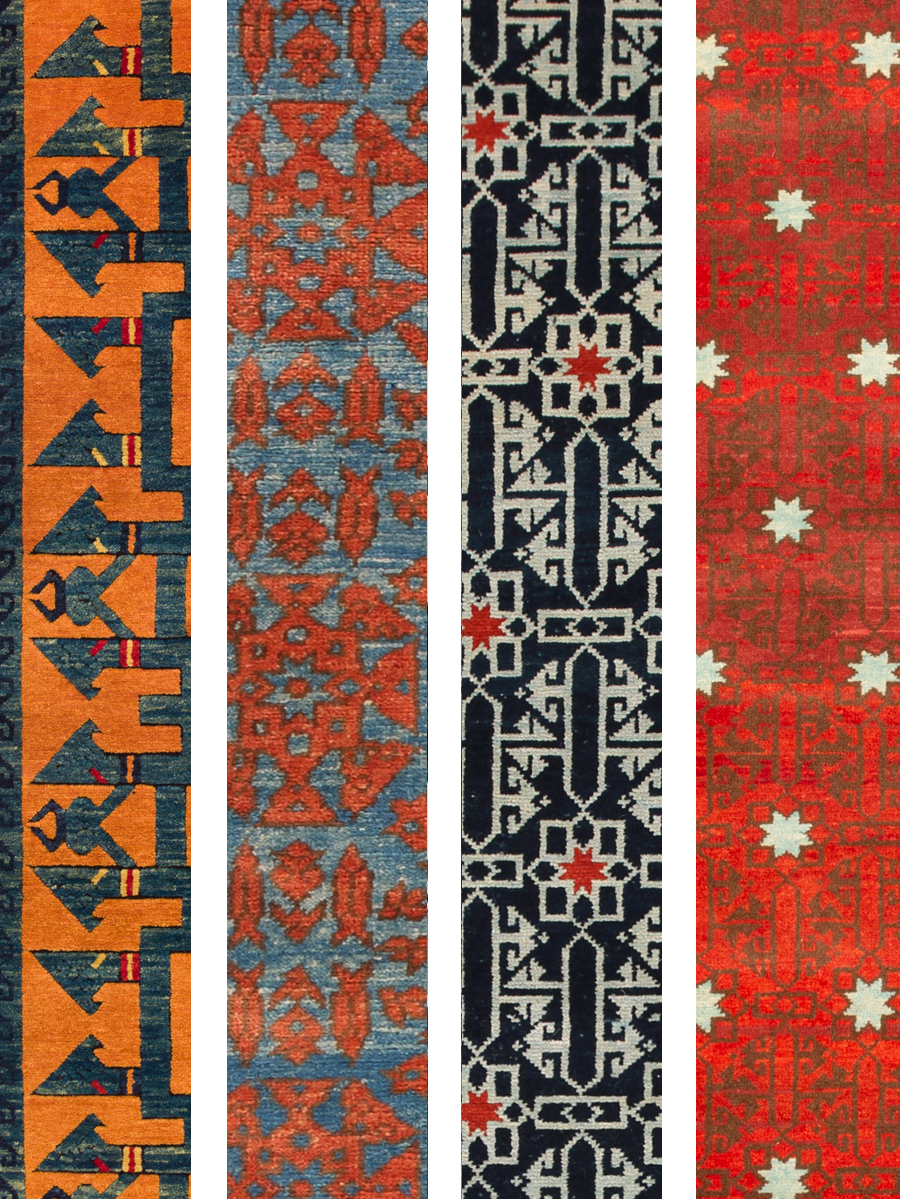 Seljuk Rug Patterns
Seljuk Rug Patterns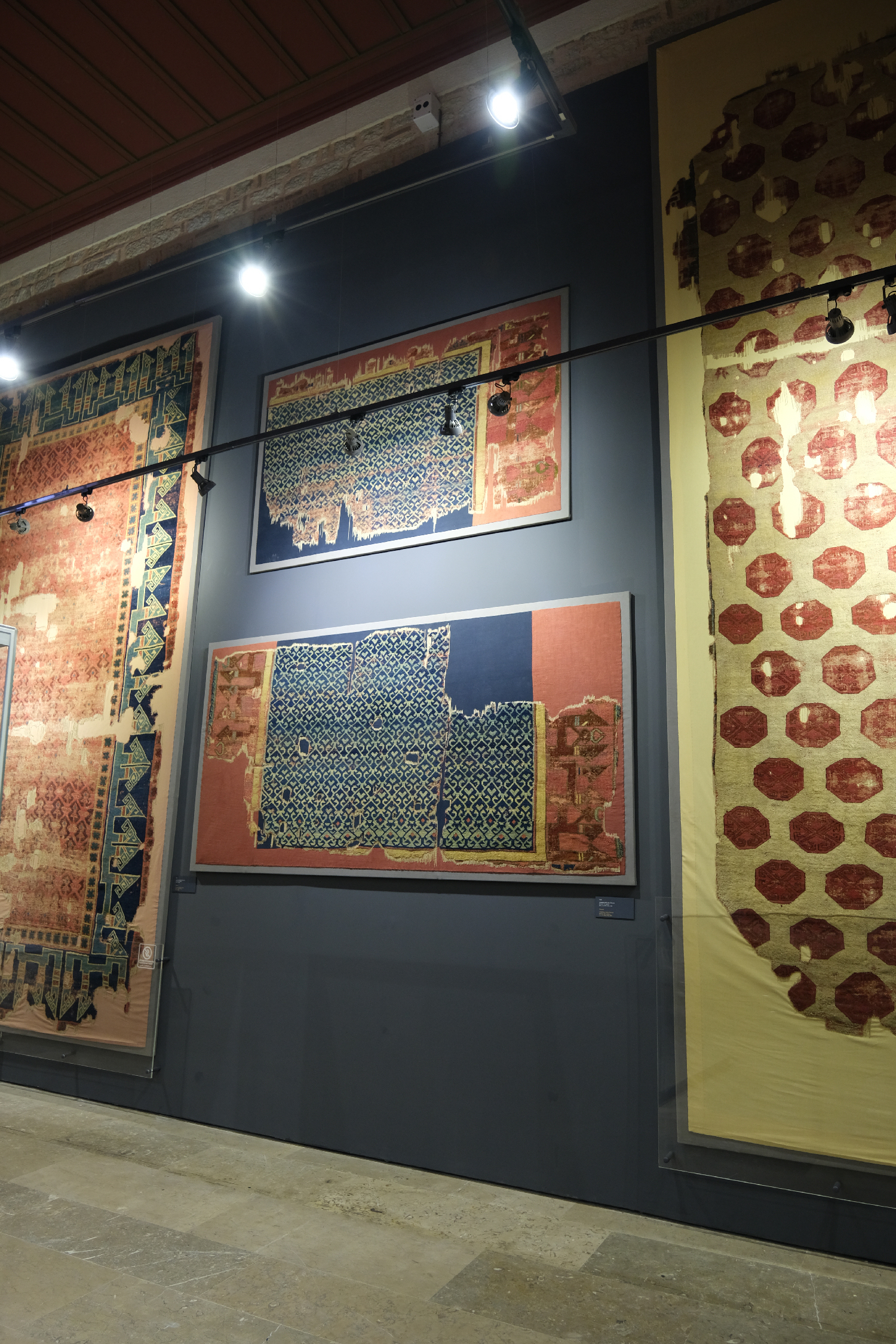 TIEM Turkish Islamic Art Museum
TIEM Turkish Islamic Art MuseumGreat Seljuks began weaving carpets in the 11th century; there are no remaining carpet fragments from this period. The Anatolian Seljuks are considered to have continued this tradition of carpet weaving, which they developed to a high level. It can be said that carpets are perhaps their most important cultural heritage. Through trade, they were introduced worldwide, and carpet production later became an activity of immense importance in the Ottoman period.
Seljuk Empire-era carpets embody characteristically blue and red tones. The rugs are in a distinctive ton-sur-ton palette of various shades of red, brown, ochre, green, and blue. This subtle use of two shades of the same color is noteworthy, as it does not appear in later Turkish rugs. The colors of the rugs still sparkle brightly to this day, as wool was treated with natural vegetal dyes.
Carpet weaving was an important industry in Seljuk times in Anatolia, and these carpets were exported to Europe. The intrepid travelers Marco Polo, crossing Anatolia in 1272, and Ibn Battuta, visiting in the 1330s, mention the fineness of the carpets they saw, and the former mentions that they were being exported.
The oldest examples of carpets woven in Anatolia with the symmetrical ghiordes knot and surviving to the present day are dated to the 14th century. The Turkish double knot (the Ghiordes knot) gives a thicker and fuller appearance than the single-knot technique in Persian rugs. The average knot count is approximately 65-74 knots per decimeter. Seljuk carpets are often large and made of sheep’s wool; they all use a white weft. They have a relatively coarse weave, 36-50 knots per square inch. It is believed that rugs were woven in many places in Anatolia, although Marco Polo, traveling in Turkey in 1272, specifically mentions the "Beautiful rugs of Konya and Karaman"
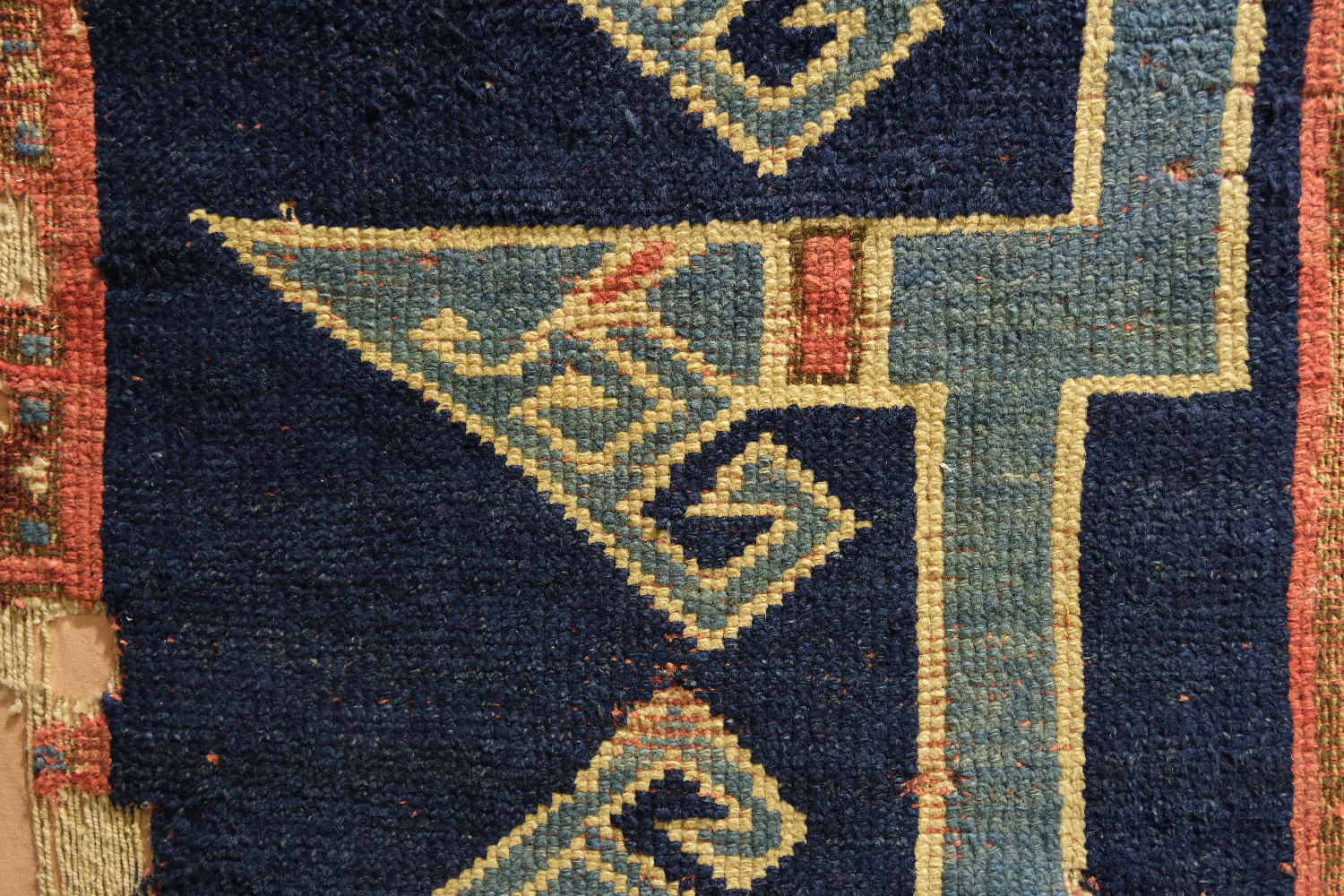 Detail of 13th Century Seljuk Rug
Detail of 13th Century Seljuk Rug
